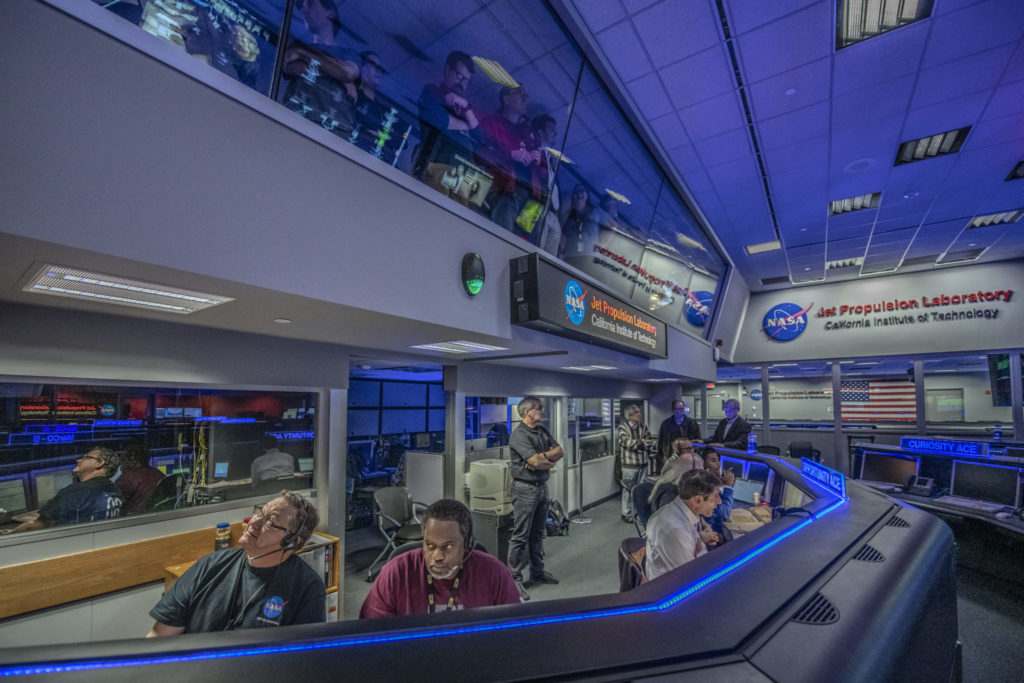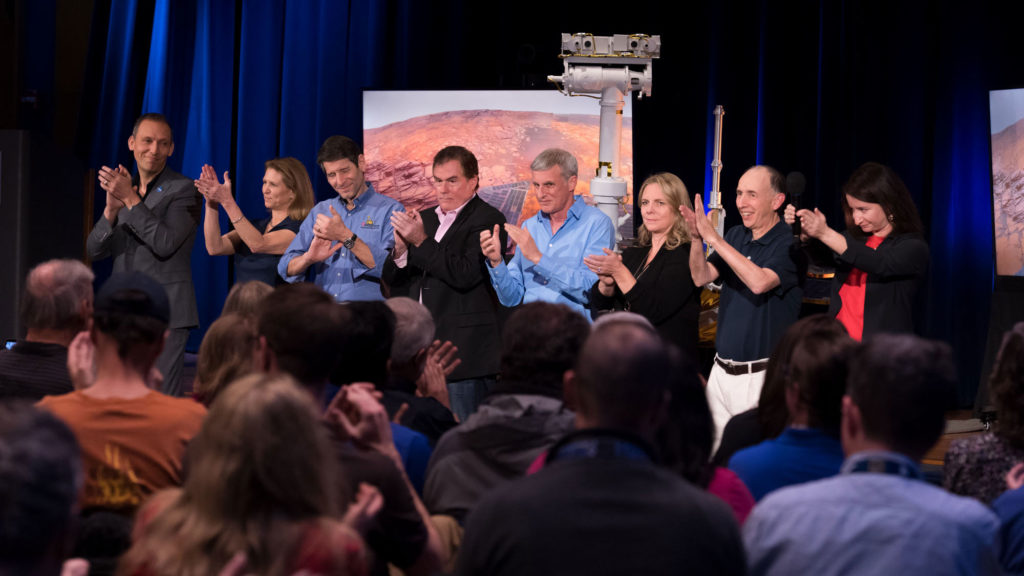It was designed to run for just 90 days, but NASA's Opportunity rover mission spanned more than 15 years.
On Thursday, NASA officially declared Opportunity dead.
It spent more than a decade exploring the surface of Mars, and helping lay the groundwork for a return to the Red Planet.
The Opportunity rover stopped communicating with Earth, when a severe Mars-wide dust storm blanketed its location in June 2018.
After more than 1,000 commands to restore contact, engineers at NASA's Jet Propulsion Laboratory (JPL) made their last attempt to revive Opportunity on Tuesday, but to no avail.
The solar-powered rover's final communication was received on June 10th.
Along the way, it discovered definitive proof of liquid water on ancient Mars and set the off-world driving record.
NASA Administrator Jim Bridenstine said: "It is because of trailblazing missions such as Opportunity that there will come a day when our brave astronauts walk on the surface of Mars.
"And when that day arrives, some portion of that first footprint will be owned by the men and women of Opportunity, and a little rover that defied the odds and did so much in the name of exploration."
Designed to last just 90 Martian days and travel 1,000 meters, Opportunity vastly surpassed all expectations with its endurance and longevity.
It also traveled more than 45 kilometers by the time it reached its final resting place on Mars - approprietly named 'Perseverance Valley'.
JPL director Michael Watkins said: "I cannot think of a more appropriate place for Opportunity to endure on the surface of Mars than one called Perseverance Valley.
"The records, discoveries and sheer tenacity of this intrepid little rover is testament to the ingenuity, dedication, and perseverance of the people who built and guided her."
Opportunity landed on Mars on January 24th, 2004, seven months after its launch from Cape Canaveral in Florida.
Its twin rover, Spirit, landed 20 days earlier in the Gusev Crater on the other side of the planet.
Spirit logged almost eight kilometers before its mission wrapped up in May 2011.
Opportunity's mission engineers, rover drivers and scientists plotted workable avenues over rugged terrain over rocks and boulders, climb gravel-strewn slopes as steep as 32-degrees, probe crater floors, summit hills and traverse possible dry riverbeds.
 Late on February 12th, 2019 mission controllers at NASA's Jet Propulsion Laboratory in California sent the last commands to ask the Opportunity rover on Mars to call home | Image: NASA/JPL-Caltech
Late on February 12th, 2019 mission controllers at NASA's Jet Propulsion Laboratory in California sent the last commands to ask the Opportunity rover on Mars to call home | Image: NASA/JPL-CaltechWhat did Opportunity achieve?
Fifteen years is a long time, on whatever planet you're on.
Here's a look at some of the milestones that the Opportunity rover set in that time
- Set a one-day Mars driving record March 20, 2005, when it traveled 721 feet (220 meters)
- Returned more than 217,000 images, including 15 360-degree color panoramas
- Exposed the surfaces of 52 rocks to reveal fresh mineral surfaces for analysis and cleared 72 additional targets with a brush to prepare them for inspection with spectrometers and a microscopic imager
- Found hematite, a mineral that forms in water, at its landing site
- Discovered strong indications at Endeavour Crater of the action of ancient water similar to the drinkable water of a pond or lake on Earth
All those accomplishments were not without the occasional setback.
In 2005 alone, Opportunity lost steering to one of its front wheels, a stuck heater threatened to severely limit the rover's available power, and a Martian sand ripple almost trapped it for good.
Two years later, it faced a two-month dust storm, and in 2015 it lost use of its 256-megabyte flash memory.
While in 2017, it lost steering to its other front wheel.
All of the off-roading and on-location scientific analyses were trying to find out one thing: historical evidence of the Red Planet's climate and water at sites where conditions may once have been favuorable for life.
NASA says: "Because liquid water is required for life, as we know it, Opportunity's discoveries implied that conditions at Meridiani Planum (its landing site) may have been habitable for some period of time in Martian history."
 A round of applause at NASA's Jet Propulsion Laboratory in California, for a successful end to the mission of its Opportunity Mars rover on February 13th, 2019 | Image: NASA/JPL-Caltech
A round of applause at NASA's Jet Propulsion Laboratory in California, for a successful end to the mission of its Opportunity Mars rover on February 13th, 2019 | Image: NASA/JPL-CaltechSteve Squyres, principal investigator of the rovers' science payload at Cornell University, said: "From the get-go, Opportunity delivered on our search for evidence regarding water.
"And when you combine the discoveries of Opportunity and Spirit, they showed us that ancient Mars was a very different place from Mars today, which is a cold, dry, desolate world.
"But if you look to its ancient past, you find compelling evidence for liquid water below the surface and liquid water at the surface."
Thomas Zurbuchen, associate administrator for NASA's Science Mission Directorate, added: "For more than a decade, Opportunity has been an icon in the field of planetary exploration, teaching us about Mars' ancient past as a wet, potentially habitable planet, and revealing uncharted Martian landscapes.
"Whatever loss we feel now must be tempered with the knowledge that the legacy of Opportunity continues - both on the surface of Mars with the Curiosity rover and InSight lander - and in the clean rooms of JPL, where the upcoming Mars 2020 rover is taking shape."
The final transmission, sent via the 70-meter Mars Station antenna at NASA's Goldstone Deep Space Complex in California, ended a multifaceted, eight-month recovery strategy in an attempt to compel the rover to communicate.
"We have made every reasonable engineering effort to try to recover Opportunity and have determined that the likelihood of receiving a signal is far too low to continue recovery efforts," said John Callas, manager of the Mars Exploration Rover project.
Its sister probe, the Curiosity Rover, even penned a farewell message:
It seems to me you lived your life
like a rover in the wind
never fading with the sunset
when the dust set in.
Your tracks will always fall here,
among Mars' reddest hills;
your candle's burned out long before
your science ever will.#ThanksOppy. I owe you so much. pic.twitter.com/x0i5WqA9sL— Curiosity Rover (@MarsCuriosity) February 13, 2019









